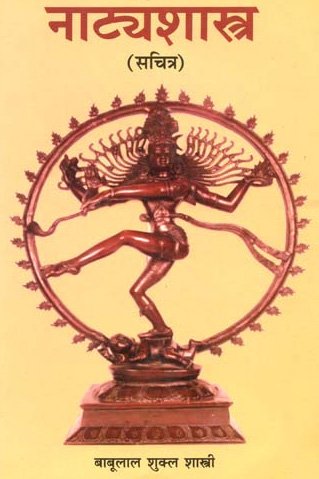Asarita, Āsārita: 3 definitions
Introduction:
Asarita means something in Hinduism, Sanskrit. If you want to know the exact meaning, history, etymology or English translation of this term then check out the descriptions on this page. Add your comment or reference to a book if you want to contribute to this summary article.
In Hinduism
Natyashastra (theatrics and dramaturgy)
Source: Wisdom Library: Nāṭya-śāstraĀsārita (आसारित) refers to one of the nine preliminaries performed behind the stage curtain, according to the Nāṭyaśāstra chapter 5. Accordingly, “The āsārita is meant for practising the division of kalās (kalābhāga).”

Natyashastra (नाट्यशास्त्र, nāṭyaśāstra) refers to both the ancient Indian tradition (shastra) of performing arts, (natya—theatrics, drama, dance, music), as well as the name of a Sanskrit work dealing with these subjects. It also teaches the rules for composing Dramatic plays (nataka), construction and performance of Theater, and Poetic works (kavya).
Languages of India and abroad
Sanskrit dictionary
Source: Cologne Digital Sanskrit Dictionaries: Edgerton Buddhist Hybrid Sanskrit DictionaryĀsarita (आसरित).—nt., and niḥsarita, nt.; °taṃ Gaṇḍavyūha 351.18, 19 respectively: the first two of ten ‘bodily conditions’ (śarīrasthā dharmāḥ), the other 8 being cold, heat, hunger, thirst, delight, anger, birth-old-age-diesase-and-death, and pain (pīḍā). Context throws no further light. Interpre- tation of these two terms obscure. Are they somehow related to āsario = saṃmukhāgataḥ Deśīnāmamālā 1.69, and ṇissariaṃ = srastam ibid. 4.40? Something like slack condition, slumped-down state might be intended by niḥsarita; would āsarita be its opposite, a state arrived at the right point?
Source: DDSA: Paia-sadda-mahannavo; a comprehensive Prakrit Hindi dictionary (S)Āsārita (आसारित) in the Sanskrit language is related to the Prakrit word: Āsāriya.
Sanskrit, also spelled संस्कृतम् (saṃskṛtam), is an ancient language of India commonly seen as the grandmother of the Indo-European language family (even English!). Closely allied with Prakrit and Pali, Sanskrit is more exhaustive in both grammar and terms and has the most extensive collection of literature in the world, greatly surpassing its sister-languages Greek and Latin.
See also (Relevant definitions)
Ends with: Apasarita, Apasrita, Aprasarita, Avasarita, Jayasimhagunasarita, Margasarita, Pasarita, Prasarita, Sampasarita, Suprasarita.
Full-text: Nihsarita, Asariya, Lilakrita, Antaryavanika, Bahirgita, Gitaka, Aparantaka, Trisama.
Relevant text
Search found 5 books and stories containing Asarita, Āsārita, Āsarita; (plurals include: Asaritas, Āsāritas, Āsaritas). You can also click to the full overview containing English textual excerpts. Below are direct links for the most relevant articles:
Natyashastra (English) (by Bharata-muni)
Chapter XXXI - On the Time-measure (tāla)
Chapter IV - Description of the Class Dance (tāṇḍava)
Gati in Theory and Practice (by Dr. Sujatha Mohan)
Gati performed in Pūrvaraṅga < [Chapter 3 - Application of gati in Dṛśya-kāvyas]
Gati performed in Lāsyāṅgas < [Chapter 3 - Application of gati in Dṛśya-kāvyas]
Dasarupaka (critical study) (by Anuru Ranjan Mishra)
Part 11 - Technical Aspects of a Prakaraṇa < [Chapter 10 - Prakaraṇa (critical study)]
The Religion and Philosophy of Tevaram (Thevaram) (by M. A. Dorai Rangaswamy)
Chapter 4.3 - (d) Technical terms used by Arurar in relation to Dance and Music < [Volume 2 - Nampi Arurar and Mythology]
Harivamsha Purana (by Manmatha Nath Dutt)
Chapter 90 - The Sport of the Yadus (continued) < [Book 2 - Vishnu Parva]